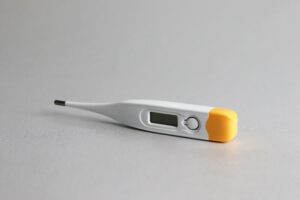How to use Duct Tape as Wart & Molluscum Removal


Can duct tape remove wart;
- Warts are a common childhood ailment.
- Warts are caused when a virus infects the top layer of the skin, the stratum corneum, and sets up residence.
- One of the most common warts in children is known as molluscum contagiosum
- Warts can remain for months and even years but often spontaneously go away, especially in children.
Warts and molluscum are highly contagious and affect most children. They often spread and grow in size because the body fails to recognize the virus as being a pathogen. Warts can be transmitted from one area of skin to another by rubbing. They can heal themselves and go away on their alone. Nevertheless, many families look for treatment and solutions to speed up the recovery.
What is molluscum?
One of the most common warts in children is known as molluscum contagiosum. These tiny pearly papules are usually no more than 5 millimeters in size and often appear in clusters.
The best advise is to leave molluscum alone. With time (months) they resolve on their own with no treatment. Sometimes, ignoring molluscum is not an option. In cases where they are spreading quickly (because they are in an area where there is skin on skin contact, like under the arm), are painful, your child continues to pick at them, or they are causing a cosmetic problem, treatment may be indicated. There are various treatment methods and your provider can help determine what might be best for your child.
Using duct tape on molluscum
One of the easiest methods to try at home is the duct tape method as described by the Schmitt Paediatric Guide:
- “Covering molluscum with duct tape can irritate them. This turns on the body’s immune system.
- Cover as many of the molluscum as possible. (Cover at least 3 of them.)
- The covered molluscum become red and start to die. When this happens, often ALL molluscum will go away.
- Try to keep the molluscum covered all the time.
- Remove the tape once per day, usually before bathing. Then replace it after bathing.
- Some children don’t like the tape on at school. At the very least, tape it every night.”
To prevent passing molluscum to others, avoid bathing with or sharing a hot tub with others and avoid sharing towels and washcloths. If the child is in contact sports, it will be helpful to cover molluscum if located in an area where there could be skin to skin contact. It takes 4-8 weeks after contact for molluscum to develop.
A physician can apply a medication known as cantharidin to the top of each little wart. The medication causes the top layer of the skin, where the virus lives, to blister and peel off, taking the virus with it. Cantharidin can also be used with other small warts but is not ideal for large warts. While the treatment is rarely uncomfortable, it is also often ineffective. Multiple applications may be necessary before the wart is fully gone.
If your child already has molluscum, to prevent more from developing, advise them to avoid scratching. Keeping nails cut short can also help. Also avoid rubbing the affected area with a washcloth or towel and then touching this on the skin.
Using duct tape on warts
Duct tape is also popular as a wart treatment and can be attempted at home. Duct tape can be used on any non-tender wart. In this treatment, the wart is cleaned and softened with soapy water. Then an unused emery board is used to gently file the wart down, stopping if it becomes uncomfortable. It is dried completely and a clean square of duct tape is applied over the wart. The duct tape is left on for a week and then gently removed with baby oil. The whole process is repeated weekly until the wart resolves.
There are many over-the-counter treatments for warts, but it’s a good idea to check with your physician before using them as many are irritating to the skin and can burn. It bears repeating that warts are usually self-limited so doing nothing is a good option for children who are not bothered by them.
How long does it take for duct tape to remove a wart?
Duct tape is a popular home remedy for removing warts. However, the effectiveness of this treatment can vary and it is not backed by scientific evidence.
The process of using duct tape to remove a wart involves covering the wart with a piece of duct tape for several days. The idea behind this treatment is that the duct tape will cut off the wart’s supply of oxygen and nutrients, causing it to die and eventually fall off.
It is difficult to predict exactly how long it will take for a wart to be removed using duct tape, as it can vary depending on the individual and the size and location of the wart. Some people may see results within a week, while others may not see any improvement for several weeks or even months.
In general, it is recommended to use duct tape as a wart treatment for no longer than two months. If the wart has not improved or disappeared after this time, it is best to discontinue the treatment and talk to a doctor about other options.
While duct tape may be a low-cost and convenient option for removing warts, it is not always effective. It is important to consult with a healthcare provider for advice and guidance on the best treatment for your specific situation.
Powered by Bundoo® Edited by Nabta Health
___
Nabta is reshaping women’s healthcare. We support women with their personal health journeys, from everyday wellbeing to the uniquely female experiences of fertility, pregnancy, and menopause. You can track your menstrual cycle and get personalised support by using the Nabta app.
Get in touch if you have any questions about this article or any aspect of women’s health. We’re here for you.
Sources
ClearTriage. Copyright 2000-2019 Schmitt Pediatric Guidelines LLC. Author: Barton Schmitt MD, FAAP













































